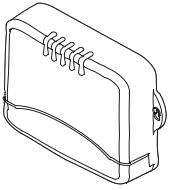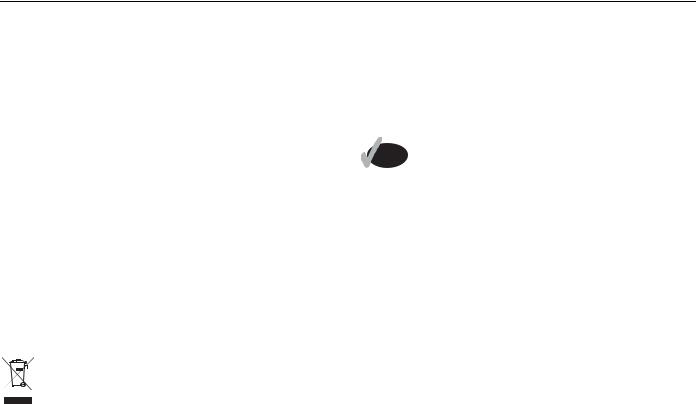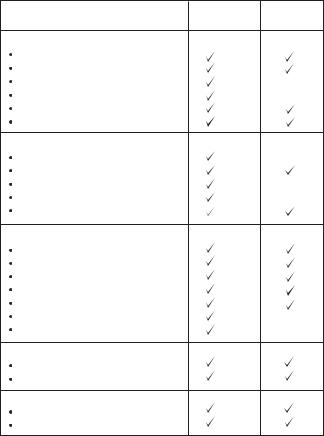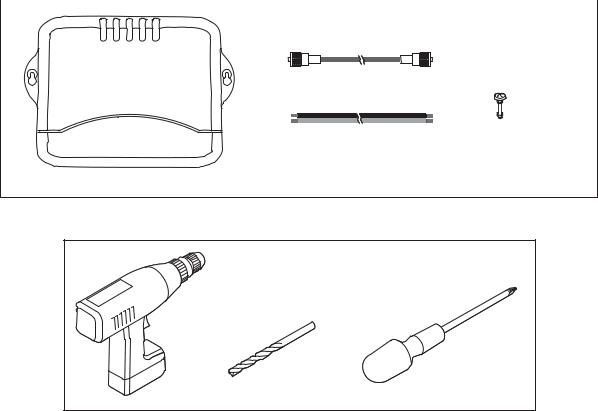Raymarine AIS250 RECEIVER Manual
Raymarine
ReceiverAIS250
User’s Guide
Document Number: 81286_1
Date: February 2007
trademarksregisteredandTrademarks
Autohelm, HSB, Raymarine, RayTech, Sail Pilot, SeaTalk and Sportpilot are registered trademarks of Raymarine Limited. Apelco is a registered trademark of Raymarine Holdings Limited (Registered in all major marketing territories).
AST, Autoadapt, Auto GST, Autoseastate, Autotrim, Bidata, Marine Intelligence, Maxiview, On Board, Raychart, Raynav, Raypilot, Raystar, ST40, ST60, Seaclutter, Smart Route, Tridata and Waypoint Navigation are trademarks of Raymarine Limited.
All other product names mentioned are trademarks or registered trademarks (if applicable) of their respective companies.
2007plcRaymarine©

Contents |
|
Contents |
|
.......................................................noticesSafety |
1 |
............................................informationImportant |
3. |
Introduction ....................................................................... |
3 |
Intended use ...................................................................... |
3 |
Compatibility ...................................................................... |
3 |
Warranty ............................................................................ |
4 |
EMC conformance ............................................................. |
4 |
Waste Electrical and Electronic Equipment Directive ........ |
4 |
Restriction of the use of certain Hazardous Substances ... |
4 |
Handbook information........................................................ |
4 |
What is AIS? ...................................................................... |
5 |
Classes of AIS ................................................................... |
5 |
Static and dynamic information.......................................... |
6 |
..............................................................Installation |
9. |
EMC installation guidelines .............................................. |
9 |
Items in the box............................................................... |
10 |
Tools required ................................................................. |
10 |
System configuration ...................................................... |
11 |
Planning the installation .................................................. |
11 |
Receiver........................................................................... |
11 |
Antenna ........................................................................... |
12 |
Cable runs....................................................................... |
12 |
Power cable ..................................................................... |
12 |
Antenna cable.................................................................. |
12 |
Installing the system ....................................................... |
13 |
Receiver........................................................................... |
13 |
Cable connections .......................................................... |
14 |
AIS250 cable connections. .............................................. |
14 |
AIS250 integrated NMEA multiplexer .............................. |
15 |
Power............................................................................... |
15 |
......................................applicationAIStheUsing |
19 |
i
Introduction...................................................................... |
19 |
Selecting the correct baud rate for your AIS application . 19 |
|
Selecting the AIS function ............................................... |
19 |
AIS status Indicators ........................................................ |
19 |
Setting up AIS ................................................................. |
20 |
How AIS data is displayed?............................................. |
21 |
AIS Target symbols ......................................................... |
22 |
Viewing target information ............................................... |
23 |
AIS safety data................................................................. |
23 |
AIS target list.................................................................... |
23 |
Target list ......................................................................... |
24 |
Full AIS data .................................................................... |
24 |
Using AIS for collision avoidance .................................... |
25 |
Safe zones ....................................................................... |
25 |
Safety messages ............................................................. |
26 |
Simulator.......................................................................... |
26 |
..................................Glossary&Troubleshooting |
27 |
Troubleshooting............................................................... |
27 |
LED sequence................................................................. |
28 |
Glossary .......................................................................... |
28 |
...........................WarrantyWideWorldRaymarine |
29 |
1. Product warranty.......................................................... |
31 |
2. Onboard warranty ........................................................ |
31 |
3.Obtaining warranty service ........................................... |
32 |
4. Warranty limitations ..................................................... |
33 |
ii |
Raymarine AIS250 Receiver - Users Guide |
|
|
|
|

informationImportant1:Chapter |
3 |
|
|
informationImportant1:Chapter
Introduction1.1
Disclaimer
All information presented by the Raymarine AIS receiver is advisory only. You acknowledge the risk of incomplete and erroneous information and assume complete responsibility and risks associated with this device, and accordingly release Raymarine, Weatherdock and Dommel from any and all claims arising from the use of this service.
D10106_1
This guide contains an explanation of how to install, commission, maintain and use your Raymarine AIS250 Receiver.
useIntended
This product is an Automatic Identification System (AIS) receiver. The intended application is as one component of a navigation system for recreational and commercial vessels not covered by IMO/SOLAS carriage requirements.
Compatibility
This product has been designed to be compatible with Raymarine C and E-Series products and other systems that support AIS.

4
Warranty
To register your new Raymarine product, please take a few minutes to fill out the warranty card. It is important that you complete the owner information and return the card to us to receive full warranty benefits. Your product can be registered via our website at www.raymarine.com although this does not validate your warranty. What it does do, is enable you to stay informed of any updates to your current Raymarine products along with any other Raymarine VIP features. You will still be required to fill out the warranty card and return it to us for full warranty benefits.
EMC conformance All Raymarine equipment and accessories are designed to best industry standards for use in the recreational marine environment. The design and manufacture of Raymarine equipment and accessories conforms to the appropriate Electromagnetic Compatibility (EMC) standards, but correct installation is required to ensure that performance is not compromised. For full details and guidelines refer to www.raymarine.com.
-EquipElectronicandElectricalWaste Directivement
The Waste Electrical and Electronic Equipment (WEEE) Directive requires the recycling of waste electrical and electronic equipment. Whilst the WEEE Directive does
not apply to some of Raymarine’s products, we support its policy and ask you to be aware of how to dispose of
this product.
ReceiverSystemIdentificationAutomaticRaymarine
The crossed out wheelie bin symbol, illustrated above, and found on our products signifies that this product should not be disposed of in general waste or landfill.
Please contact your local dealer, national distributor or Raymarine Technical Services for information on product disposal.
certainofusetheofRestriction SubstancesHazardous
This product uses components that comply with the
RoHS requirements of the Restriction of the use of certain
COMPLIANT
Hazardous Substances (RoHS) Directive 2002/95/ EC.
informationHandbook
To the best of our knowledge, the information contained in this handbook was correct as it went to press. Raymarine cannot accept any liability for any inaccuracies or omissions it may contain.
In addition, our policy of continuous product improvement may change specifications without notice. As a result, Raymarine cannot accept liability for any differences between the product and this handbook.

informationImportant1:Chapter
AIS?isWhat
AIS permits the non-verbal exchange of navigation information between vessels and shore-side vessel traffic centers. AIS uses digital radio signals to broadcast information about the vessel to other ships and shore based stations via dedicated VHF frequencies in the maritime band.
AIS will not replace radar because it is unable to detect landmasses and navigational beacons, but it can be used as a significant enhancement to currently available technology.
AISofClasses
Your AIS250 is a receive-only unit that will receive messages from vessels carrying Class A or Class B transceivers.
AClass
A Class A transceiver transmits and receives AIS signals. It is currently compulsory on all commercial vessels that exceed 300 tons that also travel internationally
transmittedInformation
The following information can be transmitted by a Class A AIS system:
•Static data
This includes information such as Ship’s name, type, MMSI number, call sign, IMO number, length and beam and GPS antenna location.
•Voyage related data
This includes information such as draft, cargo, destination, ETA and other relevant information.
•Dynamic data
5
This includes information such as time (UTC), ship’s position, COG, SOG, heading, rate of turn and navigational status.
•Dynamic reports
These are ship’s speed and status.
•Messages
These are alarms and safety messages.
You should remember that not all vessels will transmit all of the information.
bycoverednotvessels(Recreational-BClass A)Classsuitable
Class B transceiver’s are suitable to vessels under 65 feet in length and is not compulsory.
You should NOT assume that any class of AIS receiver is displaying all/any smaller vessels within your range.
Note: All messages contain the Ships individual MMSI number for unique reference identification purposes along with the data in the following table. Not all the information in the following table is necessarily transmitted by every vessel.

6 |
ReceiverSystemIdentificationAutomaticRaymarine |
|
|
|
|
Data details |
Class A |
Class B |
Static Data |
|
|
Ship's name |
|
|
Type |
|
|
Call sign |
|
|
IMO number |
|
|
Length and beam |
|
|
GPS Antenna loctation |
|
|
Voyage Related Data |
|
|
Draft |
|
|
Cargo information |
|
|
Destination |
|
|
ETA |
|
|
Other relevant information |
|
|
Dynamic Data |
|
|
Time |
|
|
Ship's position |
|
|
COG |
|
|
SOG |
|
|
Gyro heading |
|
|
Rate of turn |
|
|
Navigational status |
|
|
Dynamic Reports
Ship's speed
Ship's status
Messages
Alarm
Safety
D8966_1
informationdynamicandStatic
Defined transmit rates for Class A vessels shown below are provided for reference purposes only. The frequency of messages received (using the AIS250 receive-only unit) will vary due to a number of factors including but not limited to such factors as antenna height, gain and signal interference.
•Static information is either broadcast every 6 minutes, when data has been amended, or upon request.
•Dynamic information is broadcast depending on speed and course alteration based on the following tables
Ships Dynamic Conditions |
Normal reporting |
|
interval |
||
|
||
|
|
|
|
|
|
At anchor or moored |
3 Minutes |
|
|
|
|
0-14 knots |
10 Seconds |
|
|
|
|
0-14 knots and changing course |
3 1/3 Seconds |
|
|
|
|
14-23 knots |
6 Seconds |
|
|
|
|
14-23 knots and changing course |
2 seconds |
|
|
|
|
Ship faster than 23 knots |
2 Seconds |
|
|
|
|
Ship faster than 23 knots and |
2 Seconds |
|
changing course |
|
|
|
|
informationImportant1:Chapter |
7 |
|
|
Platforms condition |
Nominal reporting |
|
interval |
||
|
||
|
|
|
|
|
|
Class B Shipborne mobile equipment |
3 Minutes |
|
not moving faster than 2 knots |
|
|
|
|
|
Class B Shipborne mobile equipment |
30 Seconds |
|
moving 2-14 knots |
|
|
|
|
|
Class B Shipborne mobile equipment |
15 Seconds |
|
moving 14-23 knots |
|
|
|
|
|
Class B Shipborne mobile equipment |
5 Seconds |
|
moving faster than 23 knots |
|
|
|
|
|
Search and Rescue aircraft (airborne |
10 Seconds |
|
mobile equipment) |
|
|
|
|
|
Aids to Navigation |
3 Minutes |
|
|
|
|
AIS base station |
10 Seconds |
|
|
|
Source of information for above tables 1-1, 1-2: (ITU recommendations technical document: ITU-R M.1371-1)
8 |
ReceiverSystemIdentificationAutomaticRaymarine |
|
|
|
|

Installation2:Chapter
Installation2:Chapter guidelinesinstallationEMC2.1
Raymarine equipment and accessories are designed to the best industry standards for use in the recreational marine environment.
Their design and manufacture conforms to the appropriate Electromagnetic Compatibility (EMC) regulations, but correct installation is required to ensure that performance is not compromised.
The guidelines given here describe the conditions for optimum EMC performance, but it is recognized that it may not be possible to meet all of these conditions in all situations. To ensure the best possible conditions for EMC performance within the constraints imposed by any location, always ensure the maximum separation possible between different items of electrical equipment.
For optimum EMC performance, it is recommended that wherever possible:
•Raymarine equipment and the cables connected to it are:
•At least 3 ft. (1 m) from any equipment transmitting or cables carrying radio signals e.g. VHF radios, cables and antennas. In the case of SSB radios, the distance should be increased to 7 ft. (2 m).
•More than 7 ft. (2 m) from the path of a radar beam. A radar beam can normally be assumed to spread 20 degrees above and below the radiating element.
•The product is supplied by a separate battery from that used to start the engine. Power supply voltages below the
9
minimum specified for a product, and starter motor transients, can cause the product to reset. This will not damage the product, but may cause the loss of some information and may change the operating mode.
•Raymarine specified cables are used. Cutting and rejoining these cables can compromise EMC performance and must be avoided unless doing so is detailed in the installation manual.
FerritesSuppression
If a supplied cable is fitted with a suppression ferrite, the ferrite must not be removed, unless it is necessary to facilitate installation. Any ferrite thus removed must be replaced in the original position immediately after installation is complete.
If additional suppression ferrites are required, use only ferrites supplied by Raymarine.
EquipmentOthertoConnections
If Raymarine equipment is to be connected to other equipment using a cable not supplied by Raymarine, a Raymarine suppression ferrite MUST always be attached to the cable near the Raymarine unit.

10 |
ReceiverSystemIdentificationAutomaticRaymarine |
|
|
|
|
boxtheinItems2.2 |
|
|
4 ft. (1.2 m) AIS to VHF Antenna connector cable
 (x2)
(x2)
D10105_1
requiredTools2.3
Drill |
1/4" (3.2mm) |
Phillips |
|
Drill bit |
screwdriver |
D10103_1
